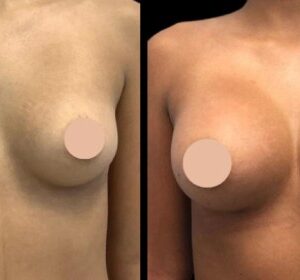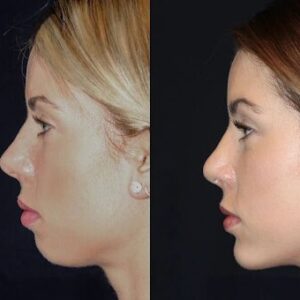Introduction:
When it comes to social interactions, many people may often confuse introversion with social anxiety. Even though these two concepts may share some similarities, it’s critical to understand the key differences between shyness and social anxiety disorder or social anxiety phobia. To dispel this widespread misunderstanding, we shall examine the unique qualities of each in this post.
What is Social Anxiety Disorder?
A severe and ongoing dread of social situations is a hallmark of social anxiety disorder, sometimes referred to as social phobia. Individuals with social anxiety disorder may experience overwhelming anxiety and self-consciousness in everyday social interactions, leading to avoidance of social situations altogether. This extreme anxiety can interfere with a person’s ability to form relationships, attend social events, or even perform day-to-day tasks.
Common Symptoms of Social Anxiety Disorder:
- Fear of being ridiculed or condemned in public
- Physical signs including perspiration, shaking, or an accelerated heartbeat
- Avoidance of social situations
- Difficulty speaking or engaging in conversations
- Negative self-perception and low self-esteem
What is Introversion?
On the other hand, introversion is a personality trait characterized by a preference for solitude and quiet environments. Introverts may feel more energized and rejuvenated from spending time alone or engaging in activities that require deep concentration. While introverts may not necessarily seek out social interactions, they do not experience the same level of fear or anxiety in social situations as individuals with social anxiety disorder.
Key Characteristics of Introversion:
- Enjoying solitary activities such as reading, writing, or hobbies
- Feeling drained or overwhelmed by large social gatherings
- Preferring deep conversations over small talk
- Valuing close-knit relationships over large social circles
Key Differences Between Introversion and Social Anxiety:
- Motivation: Introverts choose to spend time alone due to personal preference and the need for introspection, while individuals with social anxiety may avoid social situations out of fear and anxiety.
- Emotional Response: Introverts may feel comfortable and at ease in solitude or smaller group settings, whereas individuals with social anxiety may experience intense fear, worry, and physical symptoms in social situations.
- Impact on Daily Life: While introversion is a personality trait that influences one’s preferences and behaviors, social anxiety disorder can significantly impair an individual’s ability to function in social, work, and personal settings.
- Treatment Approach: Introversion does not require treatment, as it is a normal variation of personality. On the other hand, social anxiety disorder may benefit from therapy, medication, or a combination of both to help manage symptoms and improve quality of life.
Conclusion:
In conclusion, it is essential to differentiate between introversion and social anxiety disorder to avoid misconceptions and misunderstandings. While introverts may prefer solitude and quiet environments, individuals with social anxiety experience intense fear and anxiety in social situations. By understanding the key differences between these two concepts, we can foster empathy, awareness, and support for those dealing with social anxiety disorder. Remember, introversion is a personality trait, while social anxiety disorder is a mental health condition that may require professional help and treatment. Let’s strive to create a more compassionate and understanding society for all individuals, regardless of their social preferences or struggles.
SEO Meta-Description:
he terms “introversion” and “social anxiety disorder” are often used interchangeably, leading to widespread misunderstanding. While both can involve a preference for solitude or discomfort in social settings, they are fundamentally distinct. One is a personality trait, a natural variation in how individuals process stimuli and recharge, while the other is a debilitating mental health condition requiring professional attention.
Introversion, a core component of one’s personality, describes individuals who tend to be energized by solitude and drain their energy in social situations. They often prefer deep, meaningful conversations over superficial small talk and may require time alone to recharge after social interactions. This preference isn’t driven by fear, but rather by how their brains process external stimulation. Introverts are often reflective, thoughtful, and may excel in environments that allow for focused work and independent thought. They might choose to stay home on a Friday night because they genuinely enjoy the peace and quiet, not because they are afraid of going out. For an introvert, social interaction can be enjoyable, but it is ultimately draining, much like an extrovert might find solitude enjoyable in small doses but ultimately draining.
Additionally, group therapy can offer a safe space for people to talk about their experiences and gain knowledge from others going through comparable struggles. This fear stems from a worry about being scrutinized, judged, or humiliated by others. Individuals with SAD may experience a range of physical symptoms like blushing, sweating, trembling, rapid heart rate, and nausea when faced with social interactions. They often go to great lengths to avoid social events, even if it means missing out on opportunities or isolating themselves. The fear associated with SAD is irrational and disproportionate to the actual threat, significantly impacting daily life, relationships, and professional pursuits. A person with SAD might desperately want to attend a social event but be paralyzed by fear, whereas an introvert might simply prefer not to go.
The key differentiator lies in the underlying motivation and the impact on daily functioning. Introversion is a choice-driven preference for certain environments and activities; it doesn’t cause significant distress or impairment. Introverts can navigate social situations effectively when needed, albeit with a preference for less frequent or intense engagement. SAD, however, is characterized by an overwhelming, uncontrollable fear that dictates behavior and severely limits an individual’s ability to engage in everyday social interactions. It’s not about preferring quiet; it’s about being terrified of judgment.
Understanding this distinction is crucial. Mistaking social anxiety for introversion can lead to underdiagnoses and undertreatment of a condition that can be profoundly debilitating but is often manageable with therapy, medication, or both. Conversely, pathologizing introversion can unnecessarily label a healthy personality trait as a disorder. Recognizing these differences allows for greater empathy, appropriate support, and a more accurate understanding of the diverse ways individuals experience and interact with the world.




